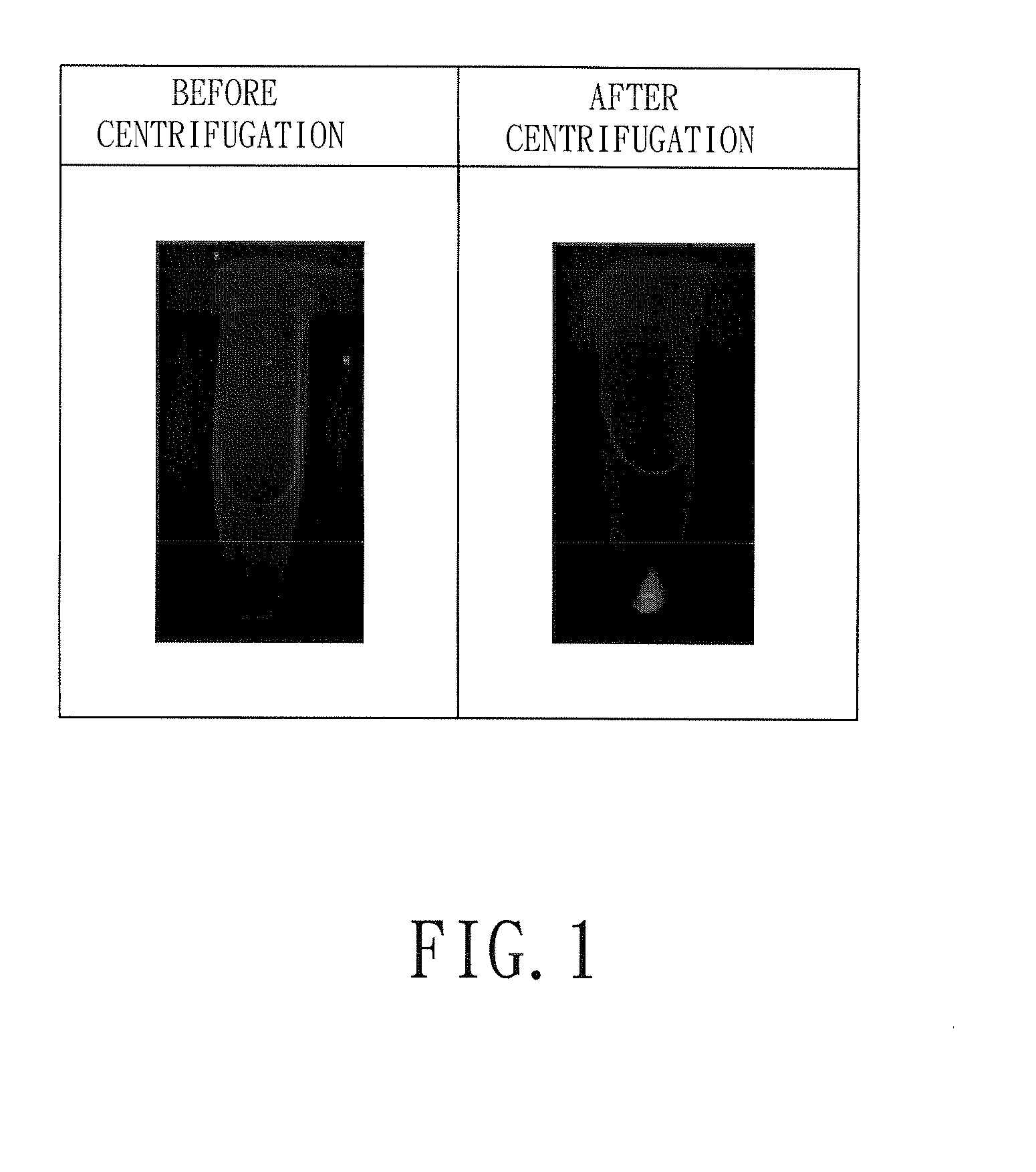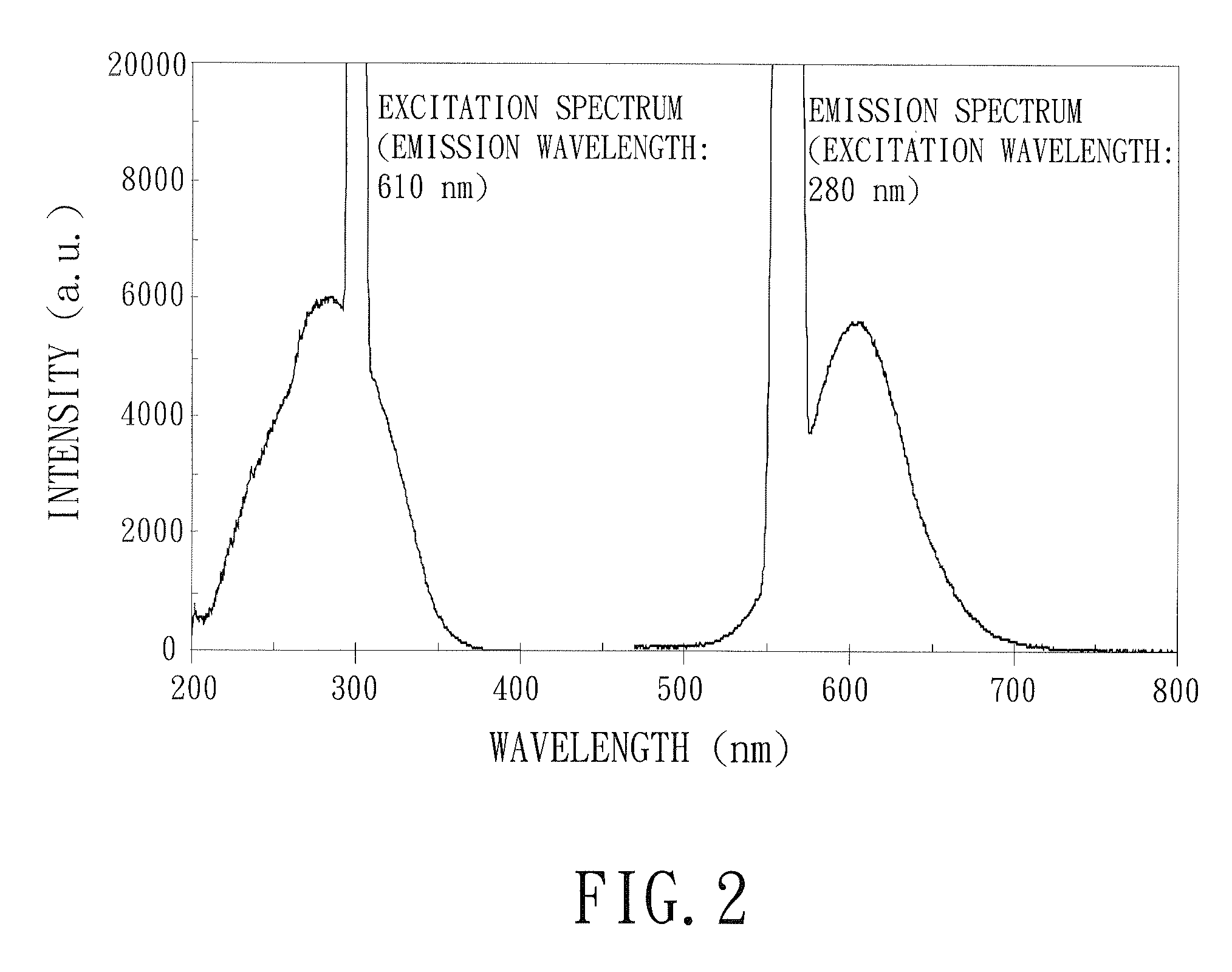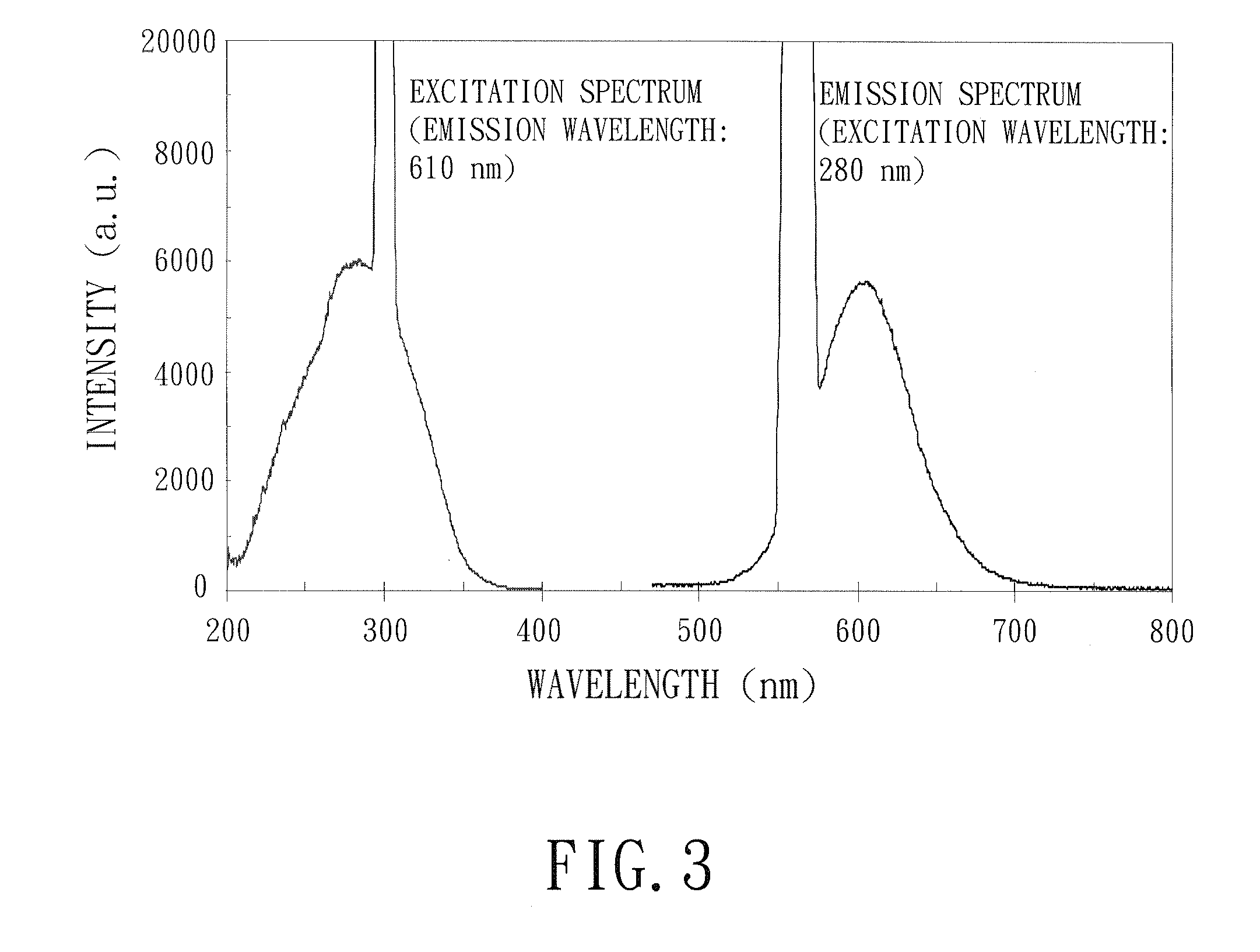Method for making fluorescent gold nano-material
- Summary
- Abstract
- Description
- Claims
- Application Information
AI Technical Summary
Problems solved by technology
Method used
Image
Examples
example 1
[0037]7 μmol of AuCl3, 15 ml of pentyl alcohol, and 45 μmol of 11-mercaptoundecanoic acid were mixed at room temperature to obtain a mixture, in which the concentration of AuCl3 was 0.47 mM, followed by reacting the mixture at room temperature for 24 hours so as to obtain a reacted mixture containing a fluorescent gold nano-material of Example 1 dispersed in pentyl alcohol.
example 2
[0038]7 μmol of AuCl3, 15 ml of pentyl alcohol, and 45 μmol of 11-mercaptoundecanoic acid were mixed at room temperature to obtain a mixture, in which the concentration of AuCl3 was 0.47 mM, followed by reacting the mixture at 90° C. for 24 hours so as to obtain a reacted mixture containing a fluorescent gold nano-material of Example 2 dispersed in pentyl alcohol.
example 3
[0039]14 μmol of AuCl3, 30 ml of pentyl alcohol, and 83 μmol of 2-mercaptoethyl amine hydrochloride were mixed at room temperature to obtain a mixture, in which the concentration of AuCl3 was 0.47 mM, followed by reacting the mixture at room temperature for 24 hours so as to obtain a reacted mixture containing a fluorescent gold nano-material of Example 3 dispersed in pentyl alcohol.
PUM
 Login to View More
Login to View More Abstract
Description
Claims
Application Information
 Login to View More
Login to View More - R&D
- Intellectual Property
- Life Sciences
- Materials
- Tech Scout
- Unparalleled Data Quality
- Higher Quality Content
- 60% Fewer Hallucinations
Browse by: Latest US Patents, China's latest patents, Technical Efficacy Thesaurus, Application Domain, Technology Topic, Popular Technical Reports.
© 2025 PatSnap. All rights reserved.Legal|Privacy policy|Modern Slavery Act Transparency Statement|Sitemap|About US| Contact US: help@patsnap.com



